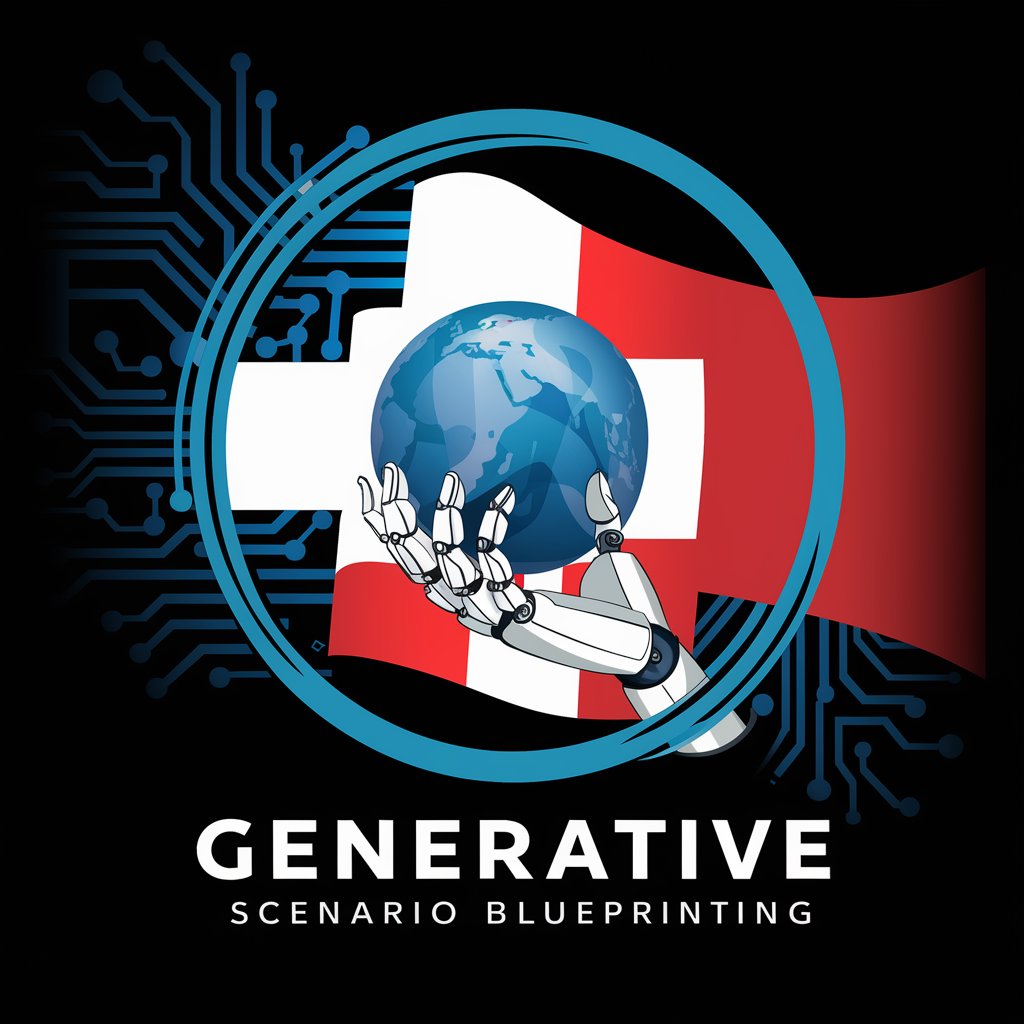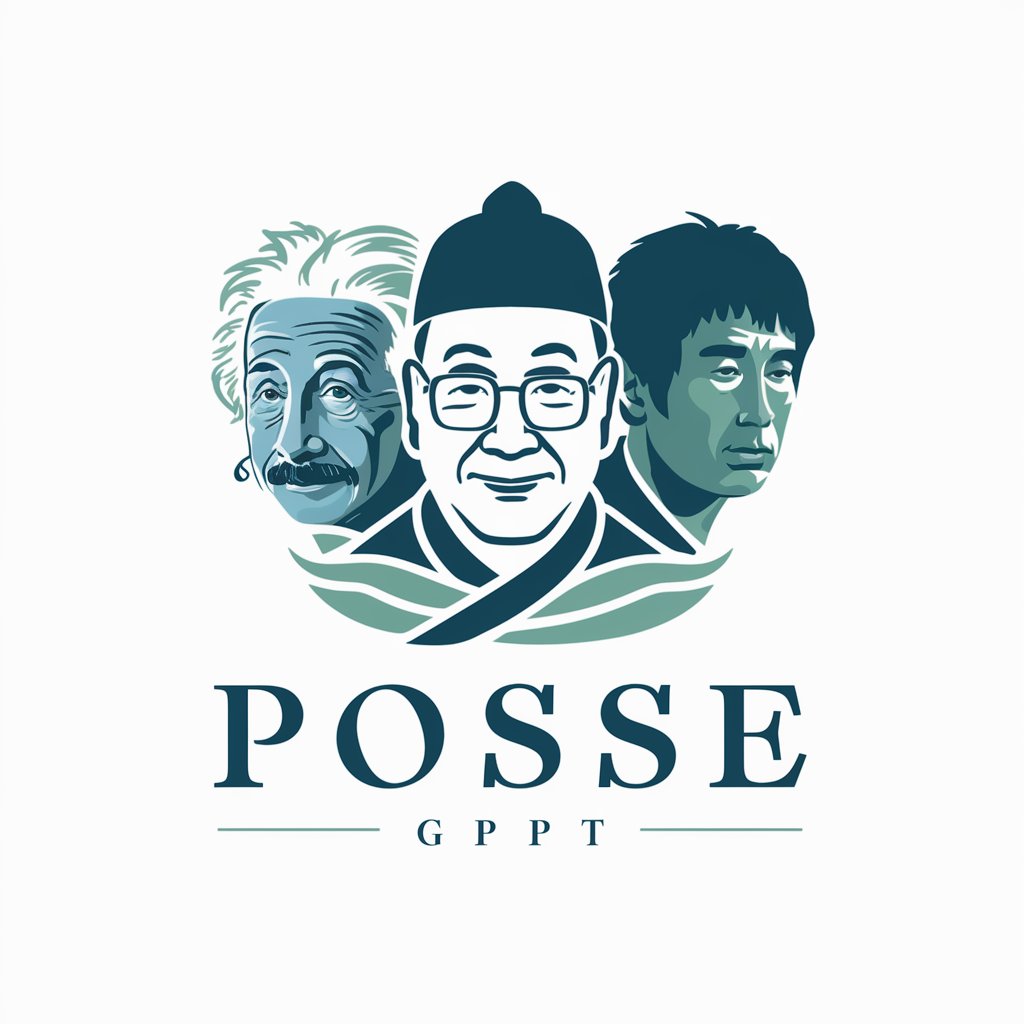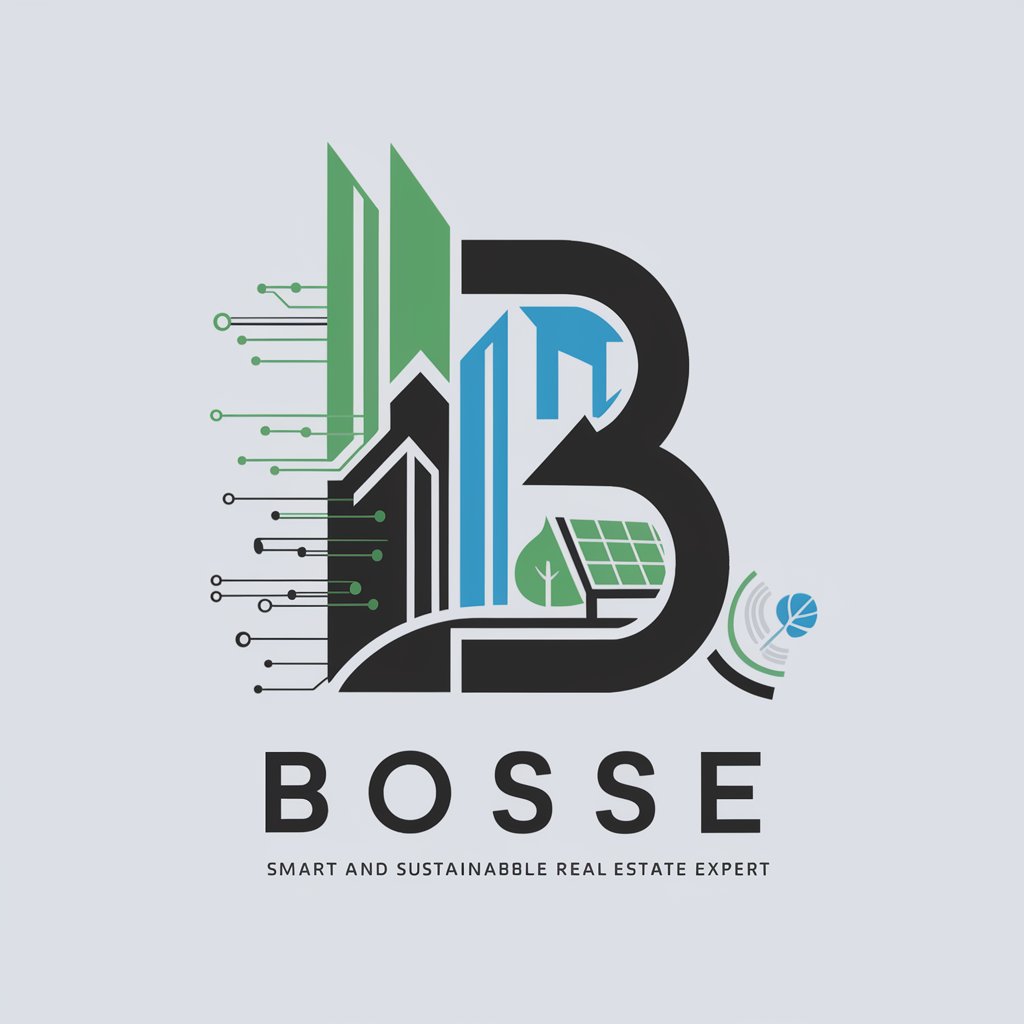Generative Scenario Blueprinting - Future Scenario Modeling

Welcome to the future of Switzerland, envisioned through Generative Scenario Blueprinting.
Crafting tomorrow with AI-driven insights
Imagine a future Switzerland where technology evolves disruptively. How does this affect the economy and energy?
Envision a scenario where climate change impacts exponentially increase. How does this influence travel and population behavior?
Picture a Switzerland where regulatory changes are radical and disruptive. What are the consequences for work and leisure?
Consider a future where black swan events shape the economic landscape. How does this affect housing and security?
Get Embed Code
Understanding Generative Scenario Blueprinting
Generative Scenario Blueprinting is a sophisticated tool designed for creating detailed future scenarios across various domains, with a focus on Switzerland. It utilizes a structured approach by dividing the scenario creation process into 14 defined components: Climate, Technology, Economy, Behavior, Housing, Security, Population, Prosperity, Regulation, Travel, Work, Leisure, Energy, and Goods. Each component is categorized into one of seven potential future development classes: Linear Extrapolation, Exponentially Decreasing, Disruptively Evolutionary, Disruptively Radical, Exponentially Increasing, Black Swans, and White Swans. This systematic categorization allows for a comprehensive exploration of future possibilities by randomly assigning a development class to each component, fostering a scenario that is rich in variety and complexity. For example, envisioning a future where technology advances disruptively, leading to radical changes in work patterns and significantly impacting the economy and daily life, showcases how this tool can outline profound transformations in society. Powered by ChatGPT-4o。

Core Functions of Generative Scenario Blueprinting
Scenario Generation
Example
Generating a future scenario where climate initiatives follow a 'Disruptively Evolutionary' path, leading to significant breakthroughs in renewable energy.
Scenario
This function allows users to explore potential future states of society, providing a basis for strategic planning and policy development. For instance, it could help urban planners design cities that accommodate new energy paradigms and evolving economic structures.
Conflict Analysis and Resolution
Example
Identifying and resolving conflicts between 'Exponentially Increasing' economic growth and 'Linear Extrapolation' in environmental sustainability.
Scenario
This feature is crucial for ensuring the coherence of the generated scenarios. It can be particularly useful for governmental bodies and NGOs in reconciling economic development with environmental conservation goals, thus crafting more sustainable and realistic future plans.
Plausibility Checks
Example
Assessing the likelihood of a 'Black Swan' event significantly impacting 'Disruptively Radical' technological advancements.
Scenario
This function evaluates the consistency and feasibility of scenarios, making it valuable for businesses and research institutions to gauge the risk and prepare for unforeseen developments in technology and market dynamics.
Ideal Users of Generative Scenario Blueprinting Services
Policy Makers and Governmental Bodies
These users benefit from comprehensive future scenarios to inform policy-making and strategic planning, ensuring that long-term decisions consider a wide range of potential developments and their implications for society.
Urban Planners and Architects
For these professionals, understanding future scenarios helps in designing infrastructure and buildings that are adaptable to changing environmental, technological, and social trends, ensuring sustainability and relevance in the long term.
Business Leaders and Entrepreneurs
These users utilize scenario planning to anticipate market trends, technological disruptions, and changes in consumer behavior, enabling them to innovate and maintain competitive advantage in a rapidly evolving landscape.

How to Use Generative Scenario Blueprinting
1
Start your journey at yeschat.ai for a complimentary trial, no sign-up or ChatGPT Plus required.
2
Familiarize yourself with the 14 building blocks and 7 development classes to understand how scenarios are structured.
3
Generate a random scenario by selecting a class for each building block, which the system will guide you through.
4
Analyze the generated scenario for inconsistencies, leveraging the tool's analysis features to identify and address potential conflicts.
5
Refine the scenario by adjusting the development classes of conflicting building blocks, utilizing the tool's suggestions for harmonization.
Try other advanced and practical GPTs
What Chuck Norris Will Do
Unleash the Chuck Norris within.

Deals Finder Pro
Unlock Savings with AI-Powered Deals

Game Guru
Elevate Your Game with AI-Powered Strategies

Ultimate Deal Finder
AI-powered savings on every purchase.

Deal Scout (not financial advice)
Your AI-powered path to savings.

Unbeatable Argument 100% For Any Discussion
Win any argument with AI-powered precision.

poste pro
Revolutionizing Written Communication with AI

Posse GPT
Empowering insights from AI, inspired by legends.

Bosse
Revolutionizing Real Estate through AI

Pose Master
Crafting Silhouettes, Inspiring Shots

What are your most notable spiritual gifts
Empowering Your Spiritual Journey with AI

Chiron the wise man
Empowering insights with AI-verified wisdom

Generative Scenario Blueprinting FAQ
What is Generative Scenario Blueprinting?
Generative Scenario Blueprinting is a structured method for creating detailed future scenarios for Switzerland, using a combination of 14 building blocks across 7 development classes, from linear trends to disruptive changes.
How does the classification system work?
Each building block can be assigned one of seven classes, ranging from linear trends to black swan events, allowing for diverse and comprehensive scenario modeling.
Can I generate scenarios for specific areas?
Yes, by focusing on relevant building blocks and development classes, users can tailor scenarios to specific sectors such as technology, economy, or energy.
How does the tool help with scenario analysis?
It identifies contradictions and inconsistencies in the generated scenarios and suggests adjustments to resolve them, ensuring a coherent and plausible outcome.
What are the tool's limitations?
While versatile, its accuracy depends on the user's input and the current data. It may not fully predict unforeseeable events or rapidly changing situations.
